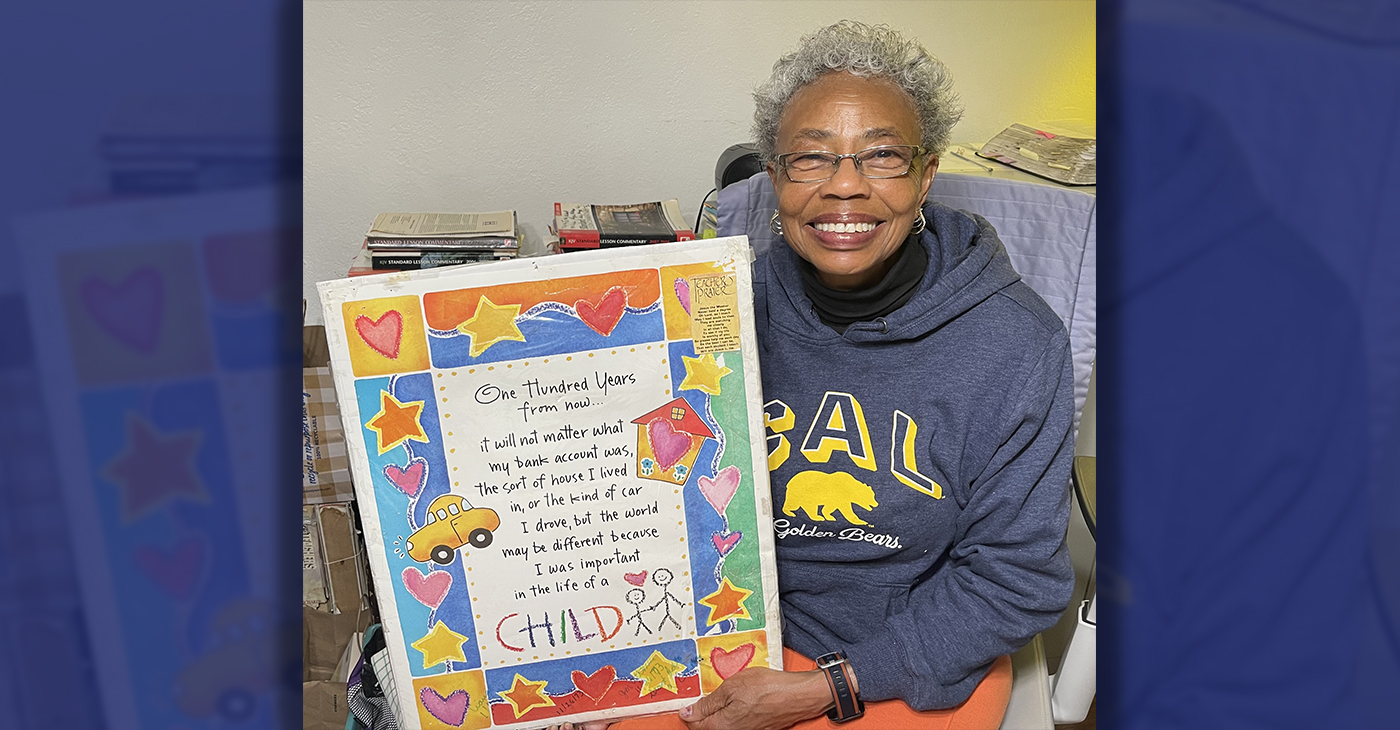Activism
Project to Help Non-Profits Gain Access to Almost $200B in State and Federal Funds
The Center at the Sierra Health Foundation, a Sacramento-based organization that promotes health and racial equity, and the James Irvine Foundation, a private San Francisco-based philanthropic nonprofit that advocates for Californians who earn low wages, are the first two foundations investing in the fund called the Community Economic Mobilization Initiative (CEMI).

By Tanu Henry, California Black Media
Non-profit organizations across California will be able to apply for funding from a pool of cash created with an initial investment of $15 million from two foundations.
The money will help local Community Based Organizations (CBOs) gain access to almost $200 billion in federal and state funding coming down the pike for economic development projects.
The Center at the Sierra Health Foundation, a Sacramento-based organization that promotes health and racial equity, and the James Irvine Foundation, a private San Francisco-based philanthropic nonprofit that advocates for Californians who earn low wages, are the first two foundations investing in the fund called the Community Economic Mobilization Initiative (CEMI).
“CEMI will strengthen nonprofits working in marginalized communities and help them secure and influence the use of public funds designated to reduce economic and environmental inequities,” said Chet P. Hewitt, president and CEO of Sierra Health Foundation and The Center.
This year, California is expected to receive close to $200 billion in federal and state funding. The money will be sourced from the American Rescue Plan ($43 billion) and Infrastructure Investment and Jobs Act ($56 billion), as well as the state’s Community Economic Resilience Fund ($565 million) and its budget surplus ($46 billion).
“This is a much-needed investment for community-driven organizations, particularly those that support the most vulnerable Californians. Historically, they have not been invested in the same manner as larger organizations. Many of them were affected throughout the pandemic and need this fiscal and operational support,” said Kellie Todd Griffin, convenor of the California Black Women’s Collective, an organization of more than 1500 Black women leaders in various professions from different regions of the state. “My hope is that there will be intentionality to be inclusive of the organizations that can have the greatest impact in our communities.”
CEMI is expected to begin funding the CBOs in the summer of 2022 with $14 million from the James Irvine Foundation and $1 million from the Center at Sierra Health.
“We have a golden opportunity to make sure these investments reach community-based organizations that best know the infrastructure their communities need for economic growth that is inclusive and resilient,” said Don Howard, president and CEO of The James Irvine Foundation.
Howard says the funding from CEMI aligns with the James Irvine Foundation’s mission of supporting low-income workers because it helps grassroots organizations and community advocates participate in the planning and decision-making that goes into the distribution of public funds.
“We need an economy built on inclusion, equity, and dignity for all work and workers — and that starts by making room for diverse leaders to have a say in how these once-in-a-generation investments shape their communities’ futures,” Howard continued.
The CEMI funding will provide technical assistance and training to the CBOs that qualify to build their capacity and infrastructure and build models for what community-driven economic development looks like, according to the Center at Sierra Health Foundation.
The funders of CEMI say they believe the organizations they support will grow into a strong network that can drive more “equitable economic development policy, regulation and accountability at state and local levels.”
The California Endowment (TCE), a private foundation with headquarters in Los Angeles, has also committed to investing in CEMI.
TCE is a 56-year-old foundation that supports programs that improve the health care of Californians living in underserved communities.
“The availability of state and federal funding provides California with an important opportunity to address critical health and economic challenges for the most vulnerable Californians,” said Dr. Bob Ross, president and CEO of TCE.
“This potential can only be realized by investing in community-led change,” Ross added.
Gov. Gavin Newsom praised the foundations for taking a leadership role in making a difference in the lives of Californians who need help the most.
“This initiative will help grow the capacity of committed organizations to continue their important work in communities across the state. This will be especially important as we focus on COVID-19 recovery and creating a healthier, safer, more equitable future for all,” Newsom said.
Hewitt says the project will result in “transformative change” in California.
“The past few years have laid bare the impact of long-term disinvestment in poor communities. We must do all we can to position community institutions to grow power and create opportunity for the places and populations they serve,” he said.
Activism
Oakland Post: Week of April 17 – 23, 2024
The printed Weekly Edition of the Oakland Post: Week of April 17 – 23, 2024

To enlarge your view of this issue, use the slider, magnifying glass icon or full page icon in the lower right corner of the browser window. ![]()
Activism
Oakland Schools Honor Fred Korematsu Day of Civil Liberties
Every Jan. 30, OUSD commemorates the legacy of Fred Korematsu, an Oakland native, a Castlemont High School graduate, and a national symbol of resistance, resilience, and justice. His defiant stand against racial injustice and his unwavering commitment to civil rights continue to inspire the local community and the nation. Tuesday was “Fred Korematsu Day of Civil Liberties and the Constitution” in the state of California and a growing number of states across the country.

By Post Staff
Every Jan. 30, OUSD commemorates the legacy of Fred Korematsu, an Oakland native, a Castlemont High School graduate, and a national symbol of resistance, resilience, and justice.
His defiant stand against racial injustice and his unwavering commitment to civil rights continue to inspire the local community and the nation. Tuesday was “Fred Korematsu Day of Civil Liberties and the Constitution” in the state of California and a growing number of states across the country.
One OUSD school is named in his honor: Fred T. Korematsu Discovery Academy (KDA) elementary in East Oakland.
Several years ago, founding KDA Principal Charles Wilson, in a video interview with anti-hate organization “Not In Our Town,” said, “We chose the name Fred Korematsu because we really felt like the attributes that he showed in his work are things that the children need to learn … that common people can stand up and make differences in a large number of people’s lives.”
Fred Korematsu was born in Oakland on Jan. 30, 1919. His parents ran a floral nursery business, and his upbringing in Oakland shaped his worldview. His belief in the importance of standing up for your rights and the rights of others, regardless of race or background, was the foundation for his activism against racial prejudice and for the rights of Japanese Americans during World War II.
At the start of the war, Korematsu was turned away from enlisting in the National Guard and the Coast Guard because of his race. He trained as a welder, working at the docks in Oakland, but was fired after the bombing of Pearl Harbor in 1941. Fear and prejudice led to federal Executive Order 9066, which forced more than 120,000 Japanese Americans out of their homes and neighborhoods and into remote internment camps.
The 23-year-old Korematsu resisted the order. He underwent cosmetic surgery and assumed a false identity, choosing freedom over unjust imprisonment. His later arrest and conviction sparked a legal battle that would challenge the foundation of civil liberties in America.
Korematsu’s fight culminated in the Supreme Court’s initial ruling against him in 1944. He spent years in a Utah internment camp with his family, followed by time living in Salt Lake City where he was dogged by racism.
In 1976, President Gerald Ford overturned Executive Order 9066. Seven years later, the 9th Circuit Court of Appeals in San Francisco vacated Korematsu’s conviction. He said in court, “I would like to see the government admit that they were wrong and do something about it so this will never happen again to any American citizen of any race, creed, or color.”
Korematsu’s dedication and determination established him as a national icon of civil rights and social justice. He advocated for justice with Rosa Parks. In 1998, President Bill Clinton gave him the Presidential Medal of Freedom saying, “In the long history of our country’s constant search for justice, some names of ordinary citizens stand for millions of souls … To that distinguished list, today we add the name of Fred Korematsu.”
After Sept. 11, 2001, Korematsu spoke out against hatred and discrimination, saying what happened to Japanese Americans should not happen to people of Middle Eastern descent.
Korematsu’s roots in Oakland and his education in OUSD are a source of great pride for the city, according to the school district. His most famous quote, which is on the Korematsu elementary school mural, is as relevant now as ever, “If you have the feeling that something is wrong, don’t be afraid to speak up.”
Activism
WOMEN IMPACTING THE CHURCH AND COMMUNITY
Juanita Matthews, better known as “Sister Teacher,” is a walking Bible scholar. She moved to California from the great state of Arkansas in 1971. Sister Teacher has a passion for teaching. She has been a member of Bible Fellowship Missionary Baptist Church since 1971.

Sister Juanita Matthews
55 Years with Oakland Public School District
The Teacher, Mother, Community Outreach Champion, And Child of God
Juanita Matthews, better known as “Sister Teacher,” is a walking Bible scholar. She moved to California from the great state of Arkansas in 1971. Sister Teacher has a passion for teaching. She has been a member of Bible Fellowship Missionary Baptist Church since 1971. She followed her passion for teaching, and in 1977 became the lead teacher for Adult Class #6. Her motto still today is “Once My Student, Always My Student”.
Beyond her remarkable love for the Lord, Sister Teacher has showcased her love for teaching by working for the Oakland Unified School District for 55 years, all but four of those years spent at Emerson Elementary and Child Development School. She truly cares about her students, making sure they have the tools/supplies needed to learn either at OUSD or Bible Fellowship Missionary Baptist Church.
She’s also had a “Clothes Closet Ministry” for 51 years, making sure her students have sufficient clothing for school. The Clothes Closet Ministry extends past her students, she has been clothing the community for over 50 years as well. She loves the Lord and is a servant on a mission. She is a loving mother to two beautiful children, Sandra and Andre. This is the impact this woman of God has on her church and the community.
-

 Activism4 weeks ago
Activism4 weeks agoOakland Post: Week of March 20 – 26, 2024
-

 #NNPA BlackPress3 weeks ago
#NNPA BlackPress3 weeks agoCOMMENTARY: D.C. Crime Bill Fails to Address Root Causes of Violence and Incarceration
-

 #NNPA BlackPress3 weeks ago
#NNPA BlackPress3 weeks agoMayor, City Council President React to May 31 Closing of Birmingham-Southern College
-

 #NNPA BlackPress3 weeks ago
#NNPA BlackPress3 weeks agoFrom Raids to Revelations: The Dark Turn in Sean ‘Diddy’ Combs’ Saga
-

 #NNPA BlackPress4 weeks ago
#NNPA BlackPress4 weeks agoCOMMENTARY: Lady Day and The Lights!
-

 Activism3 weeks ago
Activism3 weeks agoOakland Post: Week of March 27 – April 2, 2024
-

 #NNPA BlackPress4 weeks ago
#NNPA BlackPress4 weeks agoBaltimore Key Bridge Catastrophe: A City’s Heartbreak and a Nation’s Alarm
-

 #NNPA BlackPress4 weeks ago
#NNPA BlackPress4 weeks agoBaltimore’s Key Bridge Struck by Ship, Collapses into Water














































